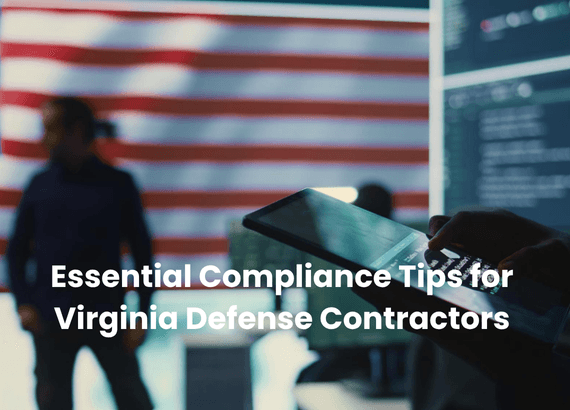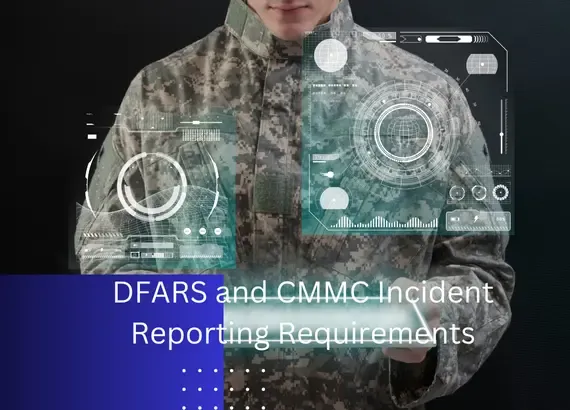
Navigating DoD Cybersecurity: From NIST 800-171 & SPRS to CMMC Certification
For defense contractors, subcontractors, and suppliers based in the U.S. who handle sensitive government data, staying eligible for Department of Defense (DoD) contracts requires meeting specific cybersecurity compliance standards. Understanding and implementing key frameworks like NIST Special Publication 800-171 and the Cybersecurity Maturity Model Certification (CMMC) are essential for maintaining this eligibility.
With NIST 800-171 as the foundational requirement, the introduction of CMMC has added a layer of complexity, alongside the mandatory reporting of your NIST 800-171 compliance status through the Supplier Performance Risk System (SPRS). At CMMC-ITAR, we specialize in helping organizations navigate these complexities, ensuring you maintain compliance to protect Controlled Unclassified Information (CUI) and remain competitive within the defense industrial base.
Understanding NIST 800-171: The Foundation and Your SPRS Score
NIST SP 800-171 is designed to protect CUI when it resides in non-federal systems. It has become the essential baseline for many organizations across the defense supply chain. Compliance with NIST 800-171 is required for handling CUI, and it is closely tied to reporting via the SPRS score.
Key Elements of NIST 800-171 Compliance:
1. 110 Security Controls: The framework lays out 110 specific security controls across 14 families (Access Control, Incident Response, Risk Assessment, etc.). Implementing these controls is the first step toward compliance.
2. Self-Assessment: To comply with NIST 800-171, organizations must perform an internal self-assessment to determine how well they have implemented each of the 110 controls.
3. System Security Plan (SSP): An SSP is a vital document that outlines how your organization has implemented each security control. It acts as your roadmap to compliance.
4. Plan of Action and Milestones (POA&M): If any controls are not fully implemented, a POA&M must be created to detail the steps, resources, and timelines to achieve full implementation.
5. The Mandatory SPRS Score: This score reflects the degree of compliance with NIST 800-171. It is calculated by evaluating how many of the 110 controls have been fully implemented. This score must be submitted to the DoD's SPRS system and is a crucial factor for winning contracts.
Explore More: CMMC Level 1 vs. Level 2 vs. Level 3
Introducing CMMC: Verification and Maturity
While NIST 800-171 defines the required security controls, CMMC offers a framework to verify their implementation and assess the overall maturity of cybersecurity practices within defense contractors. The goal of CMMC is to increase the DoD's confidence in the security practices of its contractors.
Key Features of CMMC:
1. Maturity Levels: CMMC introduces multiple levels of cybersecurity maturity, from basic to expert levels.
Level 1 (Foundational): Basic cybersecurity hygiene with 17 practices.
Level 2 (Advanced): Aligns directly with the 110 NIST 800-171 controls, plus additional practices.
Level 3 (Expert): Includes further practices beyond NIST 800-171.
2. Third-Party Assessments: A significant shift from NIST 800-171, CMMC requires third-party assessments by Certified Third-Party Assessment Organizations (C3PAOs) for contractors aiming for Level 2 and above.
3. Contractual Requirement: The DoD specifies the required CMMC level in contracts and solicitations. Contractors must meet the required CMMC level to bid on or perform work for the DoD.
NIST 800-171 (with SPRS) vs. CMMC: Key Differences
While CMMC Level 2 builds directly on the NIST 800-171 controls, there are some critical distinctions between the two frameworks:
1.Assessment & Verification: NIST 800-171 relies on internal self-assessment, with a resulting SPRS score. CMMC Level 2 requires a third-party assessment to verify compliance.
2. Reporting: NIST 800-171 requires reporting compliance via SPRS, while CMMC results in a certification, which is valid for a set period.
3. Scope & Depth: CMMC Level 2 mirrors NIST 800-171, but higher CMMC levels include additional practices and process maturity requirements.
4. Enforcement: NIST 800-171 compliance is reported through SPRS, but enforcement has been inconsistent. CMMC is more strictly enforced, with formal third-party assessments for compliance verification.
Your Strategic Path to Compliance: From SPRS to Certification
Achieving compliance with these frameworks requires a structured, methodical approach. At CMMC-ITAR, we assist organizations throughout the entire compliance process:
1. Determine Your Required Level: Identify the CMMC level specified in your DoD contracts. This will determine your compliance requirements, including NIST 800-171 and SPRS reporting.
2. Conduct a Comprehensive Assessment: We perform a detailed gap analysis to assess your current security posture. This helps in developing your SSP and POA&M and accurately calculating your NIST 800-171 SPRS score.
3. Develop and Execute Remediation: Based on the gap analysis, we create a remediation plan to address deficiencies and implement necessary security controls, improving your SPRS score.
4. Implement Controls & Refine Documentation: We help implement the necessary controls and ensure your documentation (SSP, policies, procedures) is comprehensive and demonstrates compliance.
5. Calculate and Submit Your SPRS Score: We assist in accurately calculating your SPRS score and submitting it to the SPRS system. A high score (ideally 110) will enhance your eligibility for DoD contracts.
6. Prepare for Your CMMC Assessment: We prepare you for the CMMC assessment process, ensuring all documentation is in place and your team is ready for the third-party assessment.
7. Undergo Assessment & Achieve Certification: We guide you through the C3PAO assessment process to achieve your CMMC certification.
8. Maintain Compliance: Compliance is an ongoing process. We provide continuous support to monitor your security posture and ensure you maintain up-to-date documentation and controls.
Partnering with CMMC-ITAR: Your Expert Compliance Guide
Navigating the complexities of NIST 800-171, SPRS reporting, and CMMC certification requires specialized expertise. CMMC-ITAR offers a range of services tailored to the defense industry:
NIST 800-171 & SPRS Readiness: We conduct gap assessments, develop SSP/POA&M, and guide you in calculating and submitting your SPRS score.
Remediation Support: Our team assists with implementing necessary technical and policy changes to address deficiencies.
CMMC Strategy & Implementation: We provide tailored roadmaps and implementation support to help you achieve your target CMMC level.
CMMC Assessment Readiness: We conduct pre-assessment reviews to ensure you are fully prepared for your C3PAO audit.
Ongoing Compliance Management: We help maintain your security posture and ensure you remain compliant with evolving DoD requirements.
The Future is Verified: Embrace CMMC with Confidence
CMMC represents the DoD's commitment to a more secure and resilient supply chain. By addressing NIST 800-171 compliance, submitting accurate SPRS reports, and preparing for CMMC certification, you can protect sensitive information and secure valuable defense contracts.
Don’t let cybersecurity compliance hold back your growth. Partner with CMMC-ITAR to simplify your compliance journey and stay ahead of evolving requirements.
Contact CMMC-ITAR today to discuss your NIST 800-171, SPRS reporting, and CMMC certification needs and take the next step toward a more secure future.


